Labeo: varieties, selection, care and reproduction
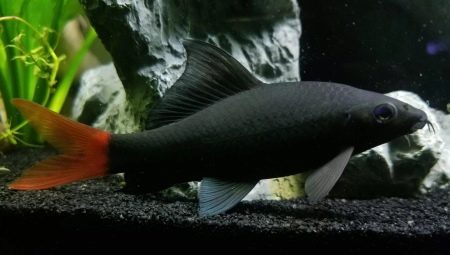
Labeo is an aquarium fish, belongs to the cyprinid family, originally from Thailand. It is important to know how to properly contain it, since there are certain nuances that we will consider.
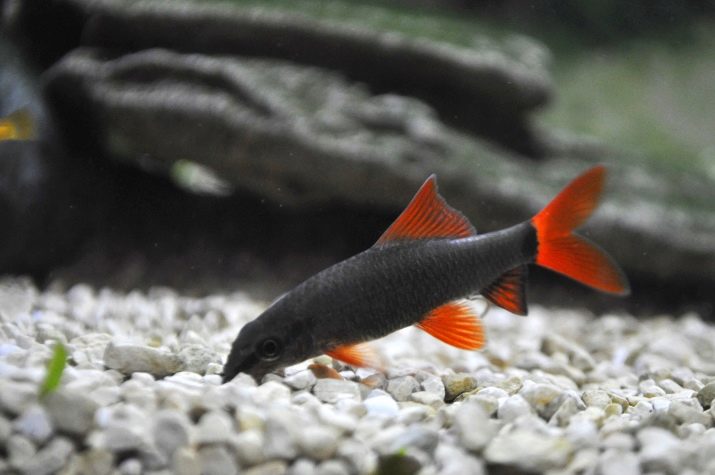
Description
Labeo is a fish with a thin, oblong body and slightly flattened sides. The back is more arched than the belly.
A distinctive feature of this species is large fins, consisting of 15-18 rays, outwardly similar to shark. The caudal fin has two lobes.
The labeo has a small head, but rather large eyes. Near the mouth there are horny villi and 2 pairs of antennae.
The fish has an unusual mouth structure: fringed lips designed to cut off algal growth and scrape off organic debris.
The size of the labeo in captivity is 15 cm, and in nature it can reach 90 cm.
Other characteristics of the fish depend on the species. Let's consider them in more detail.

Views
Consider the varieties of labeo that are suitable as pets.
- Bicolor labeo or bicolor - lives in the waters of Thailand. It was brought to Russia in 1959. Coloring: velvet black body, red or bright orange fins. The anal, pelvic and chest fins are transparent.
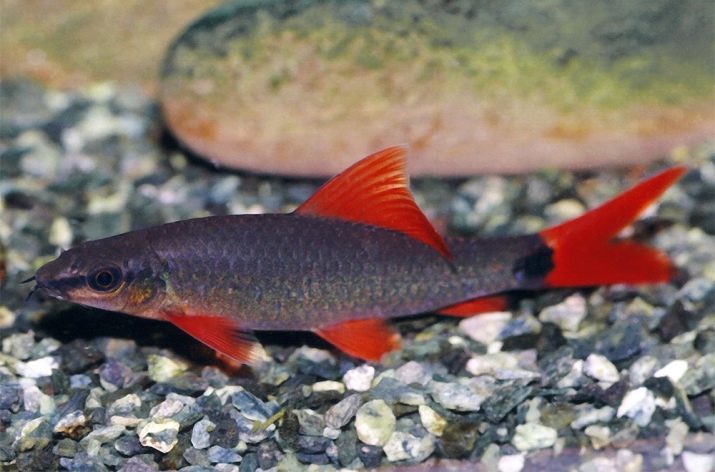
- Black labeo (or black morulis) has a black velvet color with a brownish overflow, sometimes with blue. The color of juveniles is light gray or silver, with golden or red scales. In contrast to the two-tone, the black labeo has a completely black body, including its fins and eyes.Habitat: fresh water bodies of Southeast Asia (Thailand, Borneo, Malaysia, Cambodia, Vietnam, Laos).
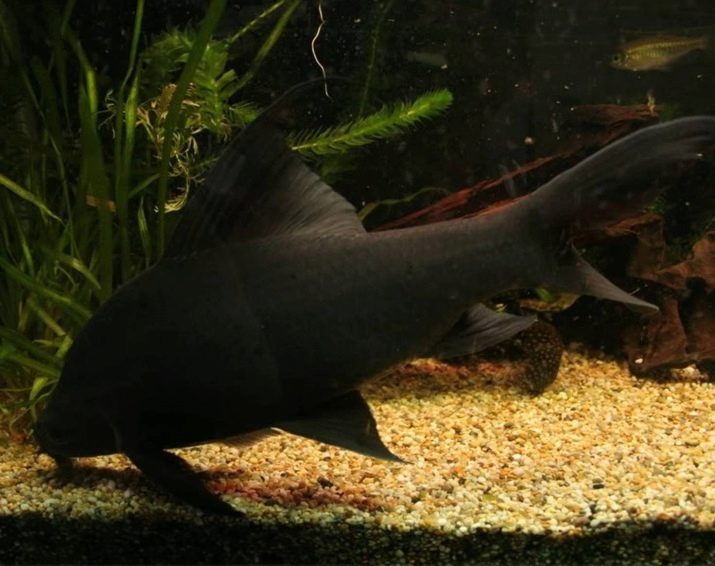
- Green or Thai labeo. This type of labeo has an unusual dark olive color with a golden tint. The belly is silver, there is a dark stripe from the stigma to the extremity, there is a dark speck near the caudal fin. All fins are reddish. It is found in fresh waters of Thailand.
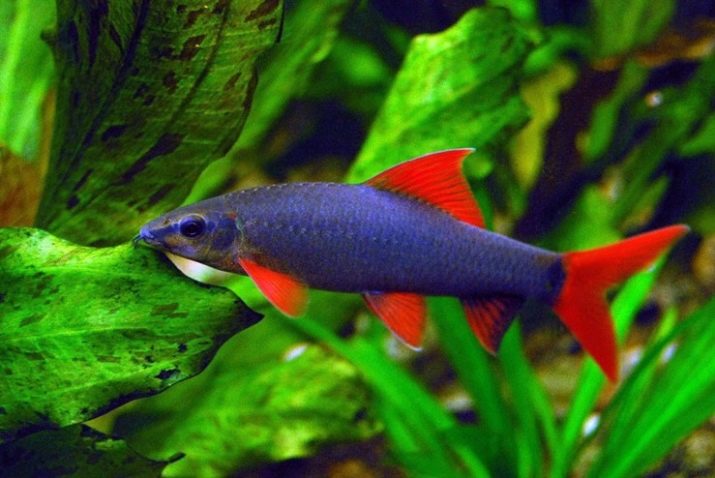
- Labeo frenatus albino (red fin). The body of this fish is thinner and longer than other types of labeo. The eyes are red, as are the fins (sometimes only the tail is red, and the rest are white). The body is white with a pinkish tint. Lives in Thailand.
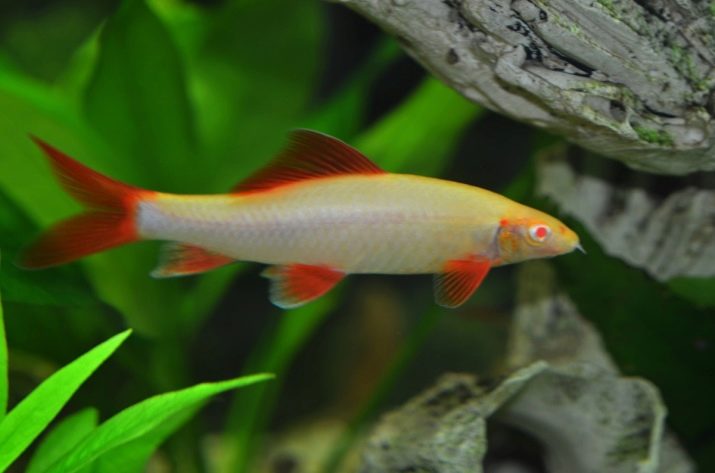
- Silver labeo - a rare species that has a very unusual silvery color with iridescent tints. There is a black speck at the tail. Habitat Africa, Nile River.
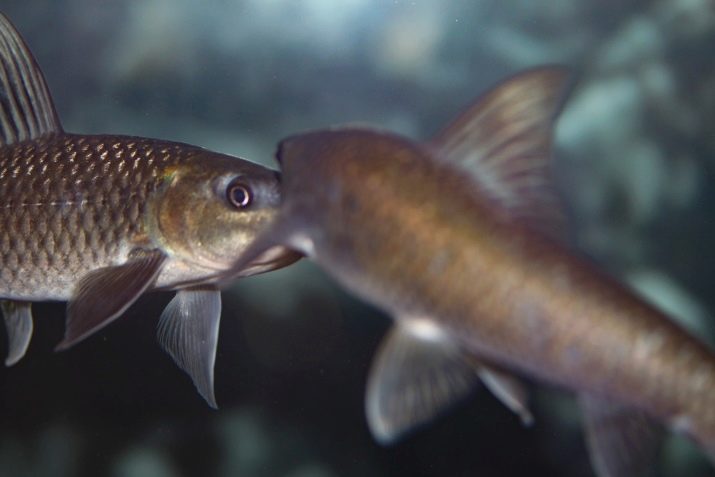
- Congolese Labeo found in the rivers of the Congo, Ogove in Gabon. The upper edge of the dorsal fin is sickle-shaped. Unusual leopard color: green-brown spots on the golden body of the fish.

- Harlequin (multicolored). Lives in Africa in the Congo River. The difference between the harlequin is that the individual changes color with age: on the beige background of the young fish there are dark brown and reddish spots, and on the black fins there are orange streaks, while the adult individual acquires a gray color. The size of the harlequin labeo can exceed 30 cm.
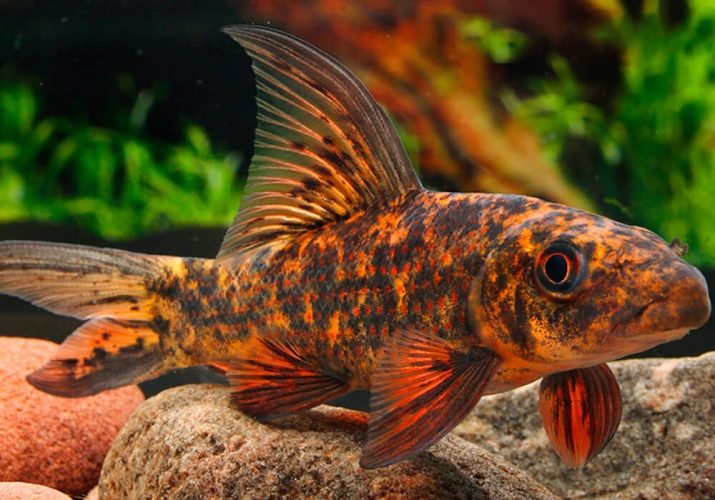
- Glofish Is a genetically modified labeo that glows in blue light or when exposed to ultraviolet rays. It comes in two shades: purple and orange. Like albino frenatus, fins and eyes are reddish.
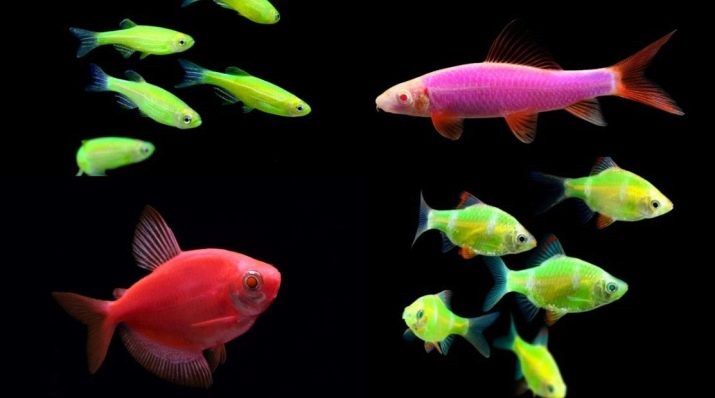
How to distinguish between a female and a male?
Knowing the gender of a labeo is not easy, but possible. The mature female has a more elongated and plump body.
The male has a pronounced keel, and the fin on the back is more pointed and longer.
In addition, the male anal fin is bordered in black during reproduction.
It is almost impossible to distinguish the sex of young individuals, since there are almost no differences.
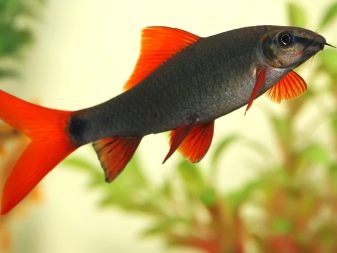
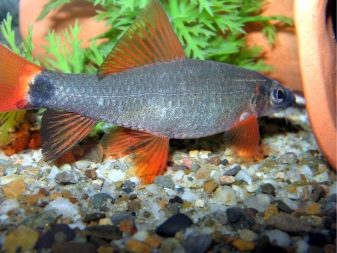
How to choose?
If you want to buy a labeo, then the question arises of how to choose it correctly.
First you need to decide on the type of labeo. After all, these are quite large aquarium fish, which means that you will need a free vessel (volume about 150 liters). Smaller labeo types are green, albino and silver. Their length is up to 10-15 cm.
If you want to keep other fish together with the labeo, then choose the less aggressive species - silver, albino and Congolese labeo.
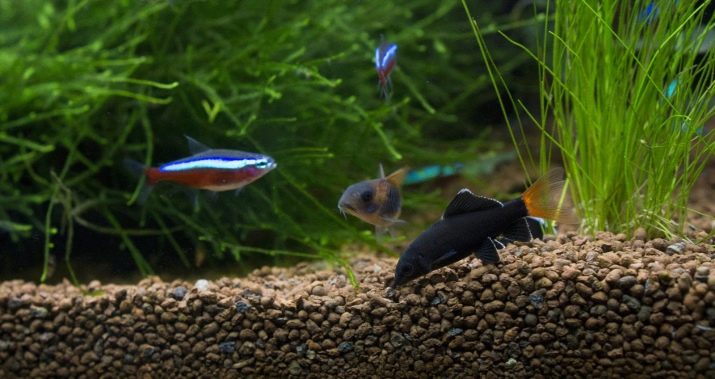
To select healthy fish, observe their behavior: labeo is a rather mobile and active fish, so it should move freely around the aquarium... Lethargy and immobility are a signal of poor health or old age of the labeo.
Content rules
As mentioned above, there are some peculiarities in the maintenance of the labeo, so it needs proper care. Let's look at where and how to properly keep this fish so that it is healthy and lives as long as possible. With proper care, the labeo can live up to 9 years.
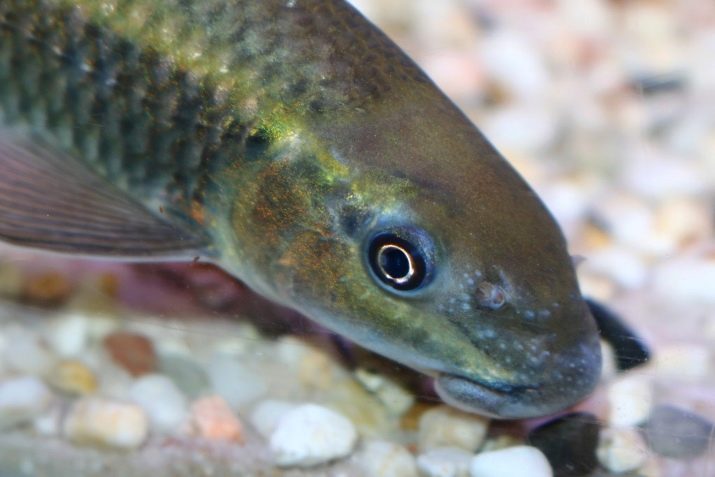
Aquarium requirements
Labeo is an aggressive territorial fish, which means if you prefer to keep several individuals of this species, consider the volume of the aquarium. It should be at least 150 liters, since one labeo representative needs 50 liters of water.
Labeo lives in the middle and lower water column.
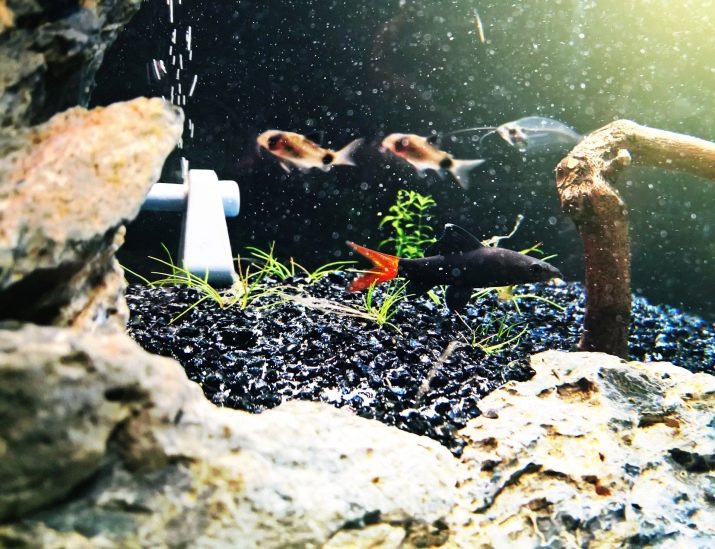
To delimit the territory, use all kinds of decorative elements: pots, driftwood, artificial caves, stones, artificial and real plants. This will serve as a refuge for the residents.
It is better to get the soil in a dark color. Lighting should not be too bright, more diffuse.
Water quality parameters:
- rigidity 4-20 units (some types up to 15);
- acidity (pH) 6-7.5 (neutral);
- temperature + 23.27 ° C (for albino labeo - up to 31 ° C).
Filtration and air saturation of the water is required, as well as replacement of 20% of the liquid from the total volume about once a week.
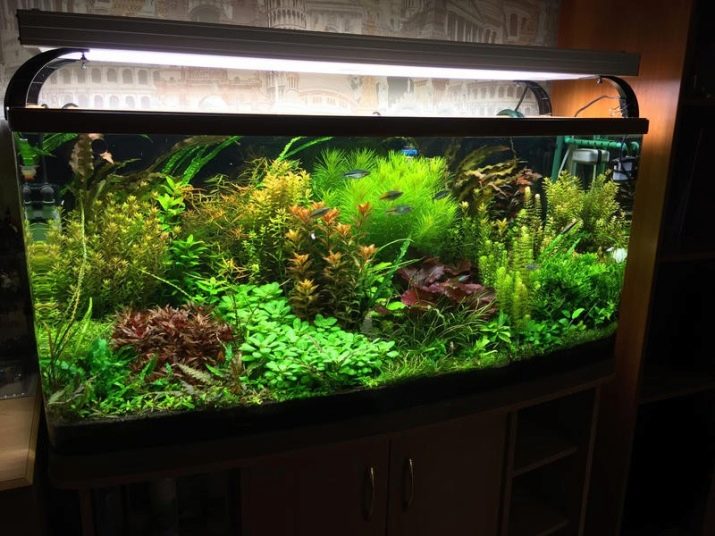
It is important to know that labeo fish can pop out of the aquarium. Therefore, you need to take care of the lid for the container.
What to feed?
The labeo species is omnivorous. He prefers live food: tubifex, daphnia, bloodworms, koretra, larvae, worms and insects. The black labeo does not mind eating animal food: for example, beef heart and other meat (preferably frozen).
And also it should be noted that Labeo can play the role of an orderly, eating up decaying fish.
Vegetable food can also be offered to these fish: spinach, pieces of cucumbers, zucchini (frozen).
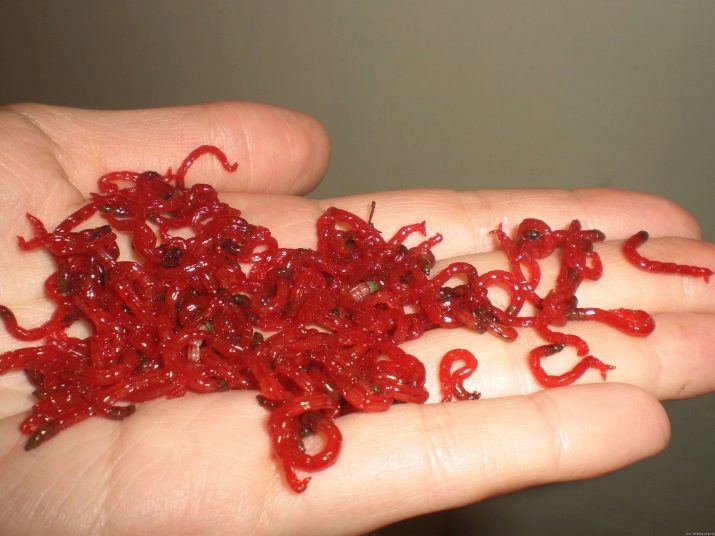
You can also diversify the diet with oatmeal, special granules and tablets.
And, of course, there is a place for dry food replacements intended for this species. It is also important to give the labeo vitamins.
Compatibility with other fish
Labeo fish are quite aggressive, so you need to carefully approach the selection of roommates for them. After all, the labeo also shows aggression towards its relatives (except for the Congolese labeo, this is a schooling fish that should be kept in groups). And the female carefully guards her territory. But as we discussed above, each representative of this species needs a separate limited area with shelters.
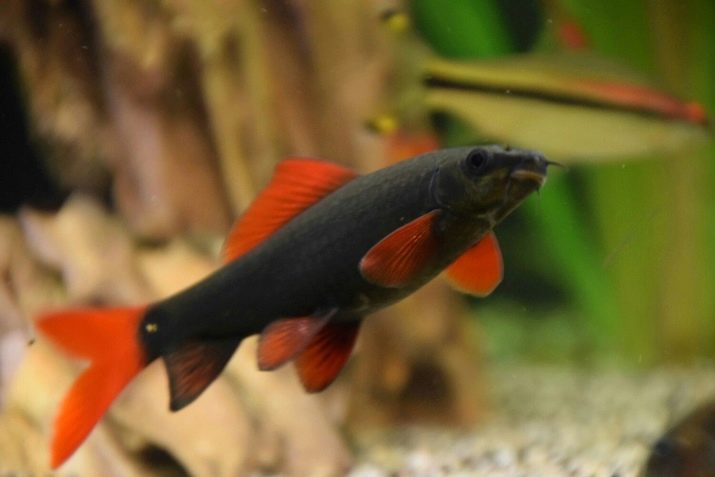
It is noteworthy that the labeo does not notice small fish, but more often attacks its relatives or fish of their own size and larger.
This is because smaller fish almost always swim in the upper and middle water column. In addition, small species are faster, so often the labeos are simply unable to catch up with them.
Note that the labeo has a special dislike for fish with bright colors.
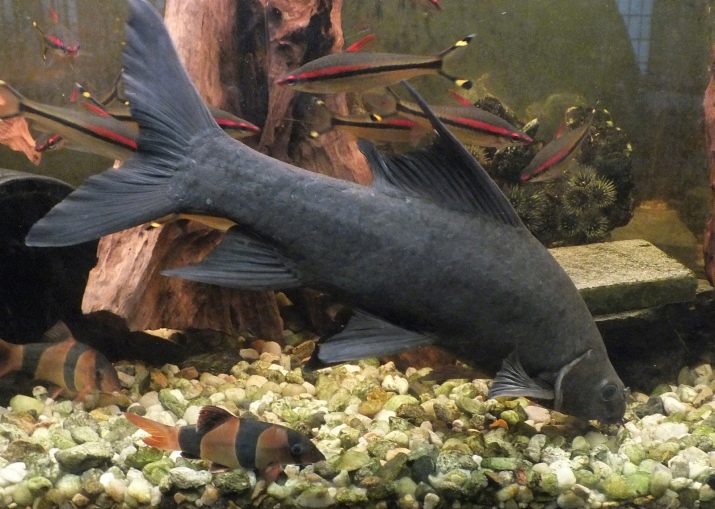
Consider in the table specific varieties, combined and not combined with labeo.
Compatibility with other breeds | ||
Possibly neighborhood | Partially | Incompatibility |
scalars, barbs, catfish, corridors, zebrafish, gourami, botsii, mollies, platies, plekostomus catfish, iris, rasbora, swordtails, tetras | African cichlids, discus, eels, guppies, shrimps, crabs | cockerels, South American cichlids, goldfish, Koi carps, Astronotus, Siamese seaweed |
Compatible fish are individuals that are able to swim freely throughout the entire territory of the aquarium, as well as the territory of the labeo.
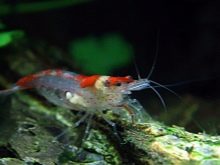
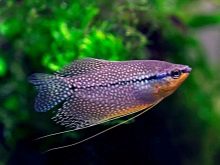
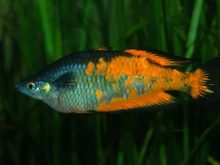
Partially - individuals, which are permissible to add to the labeo only in limited areas.
Incompatible - those types that can never be combined with labeo. The consequences are fights between individuals and their death.
Breeding
Reproduction of labeo at home is a rather time consuming and problematic task. They are bred mainly in Thailand on industrial farms. But nevertheless, reproduction of this species is possible at home.
It is necessary to choose two healthy males and one female for spawning. And also prepare a container with a volume from 200 liters with slightly morphed liquid, which needs to be defended for several days.
All kinds of shelters should be present in the aquarium: castles, stones, driftwood, caves, plants.
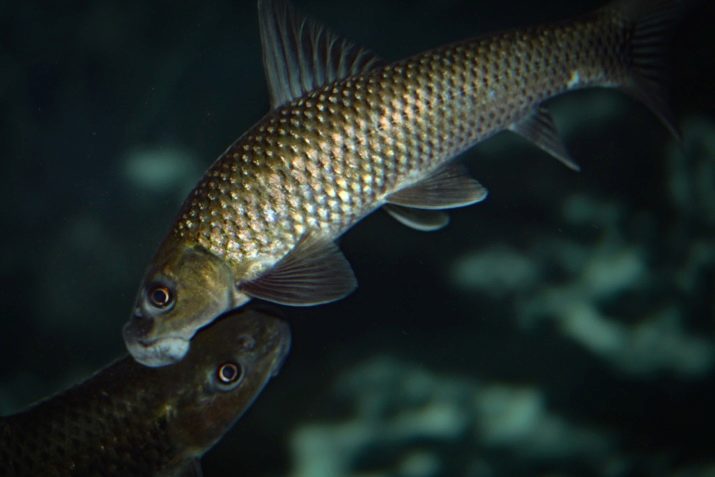
Requirements for content:
- weak, diffused light;
- enrichment with air, ensuring the flow;
- rigidity - up to 4 units;
- acidity (pH) - 6.0-6.5;
- temperature - + 24.27 ° C;
- liquid level - no more than 40 centimeters.
During spawning, individuals need proper nutrition, namely: feeding live food. Daphnia, lettuce, tubifex, cyclops, bloodworms, frozen vegetables - these are all ideal feeding for two weeks before spawning.
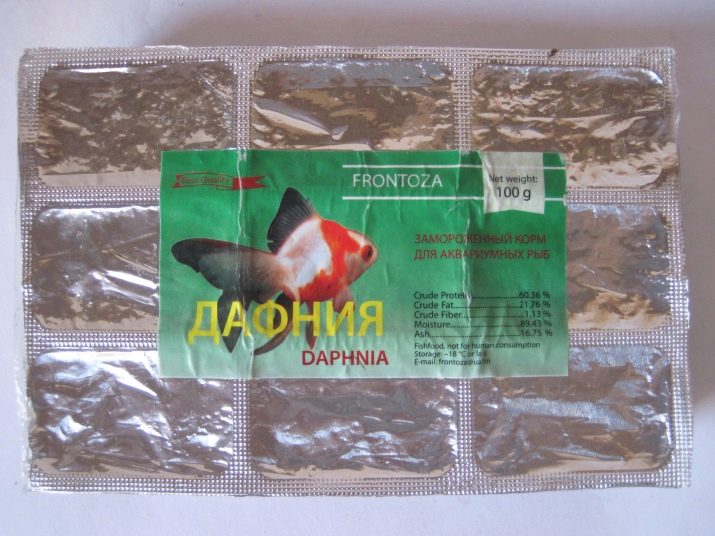
During the week, it is necessary to plant the fish in a spawning box, divided by partitions. After a day, you need to replace some of the water.
Reproduction is possible only with the help of hormonal injections. (suspension of the pituitary gland of carp fish or chorionic gonadotropin).The injection must be injected into the muscles in the back: to the female - 2-3 mg (the dose depends on the weight and type), divided into two injections with a break of 12-24 hours, and to the male - 1-1.5 mg during the second injection female individuals. After that, future producers need to be kept separate for 4-6 hours.
Then spawning begins, at this time you need to weaken the flow of water. The female lays up to one thousand eggs, after which the spawning individuals eat the eggs, which are at the bottom, without touching the eggs floating in the water. After the breeding process, the producers should be planted.

Now we proceed to sorting the caviar: after a couple of hours we remove the whitened dead eggs, and the rest are placed in an incubator with a volume of 20 liters with the same water parameters as in the vessel.
After 14 hours, labeo larvae emerge from the eggs, and after a few days the larvae turn into fry. They need to be fed with live dust, plankton, rotifers and ciliates.
Don't be discouraged if about half of the fry die - it's natural. But the rest of the young will develop correctly and actively, there will be no problems with the fry. However, you need to sort the fish from time to time, because they develop quite unevenly.
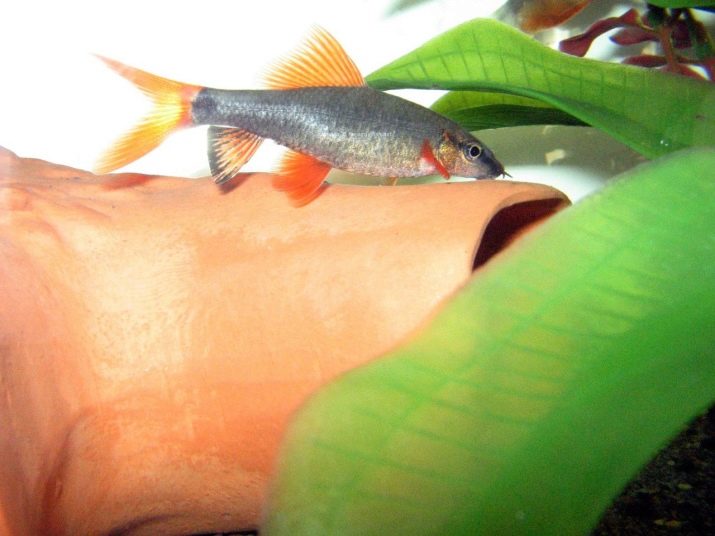
Remember, juveniles are lighter in color, which they will change with age.
Possible problems
Let's summarize by considering the problems that may arise in connection with caring for a labeo fish.
Diseases
Although these fish have strong immunity, diseases do not bypass them. The most common diseases are ichthyophthiriosis, dropsy and bacterial infection.
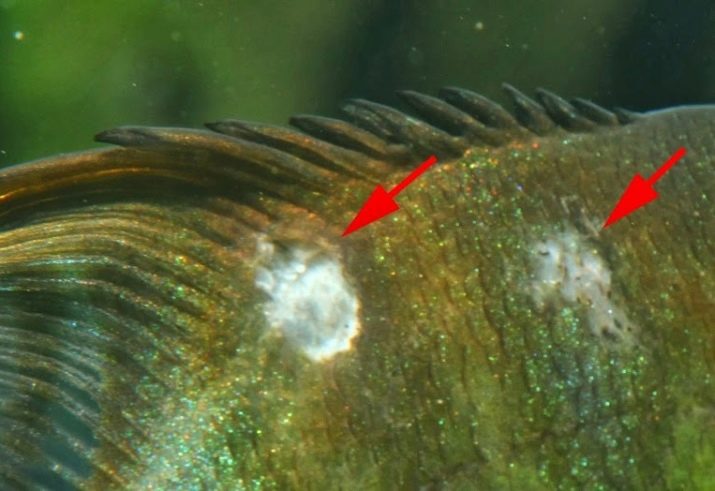
Breeding difficulties
As mentioned earlier, injections are necessary to stimulate hormones, which is quite problematic. Also, breeding the Labeo species is not easy due to the lack of males in the litter.
Aggressiveness
It is very difficult to select neighbors for the labeo, since this species actively defends its territory, which can lead to the death of pets.
In fact, keeping this type of fish is not so difficult. You just need to choose the right aquarium and follow the rules of maintenance. Then your pet will be healthy and live for a long time.
See below for labeo compatibility in the aquarium.








